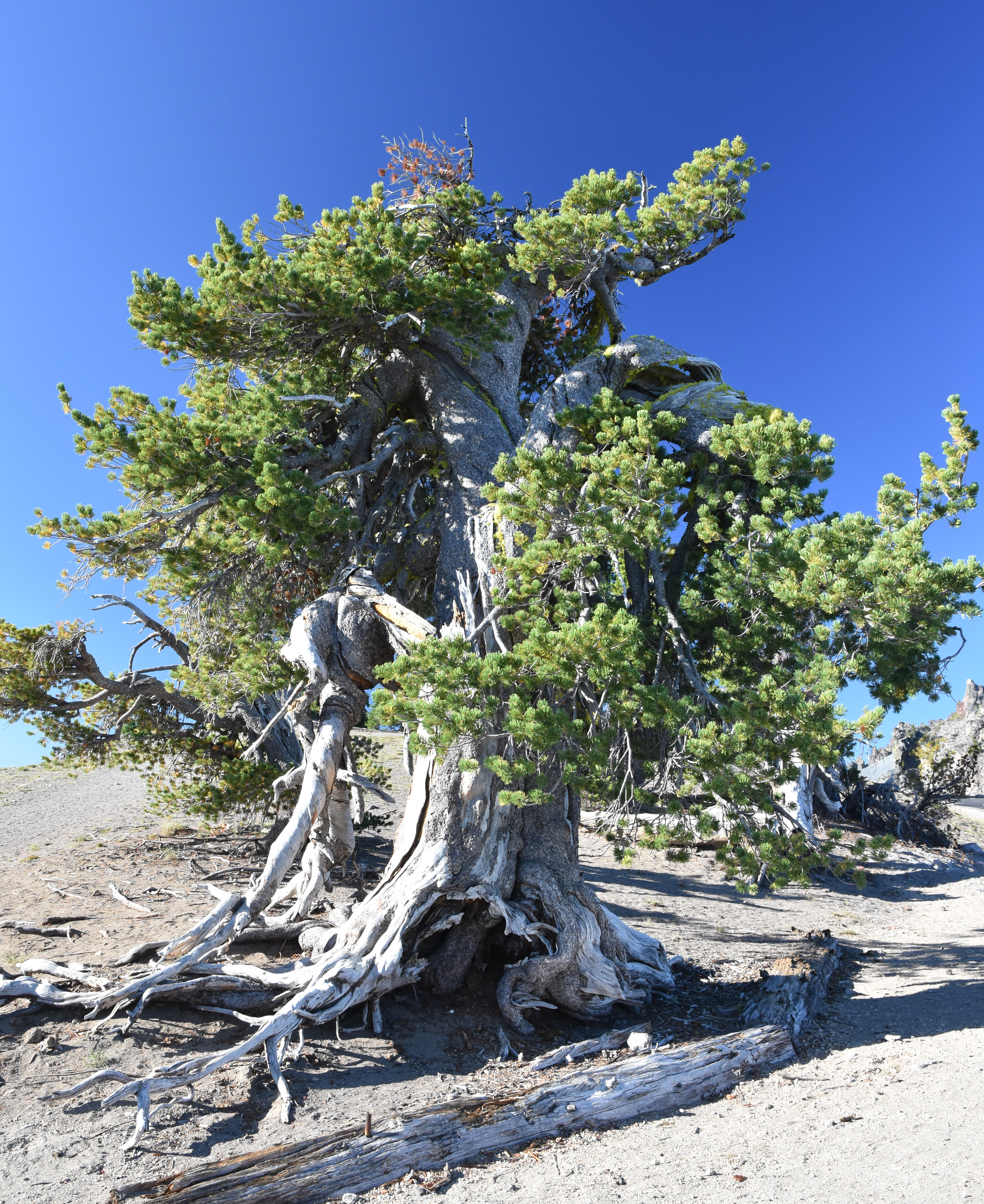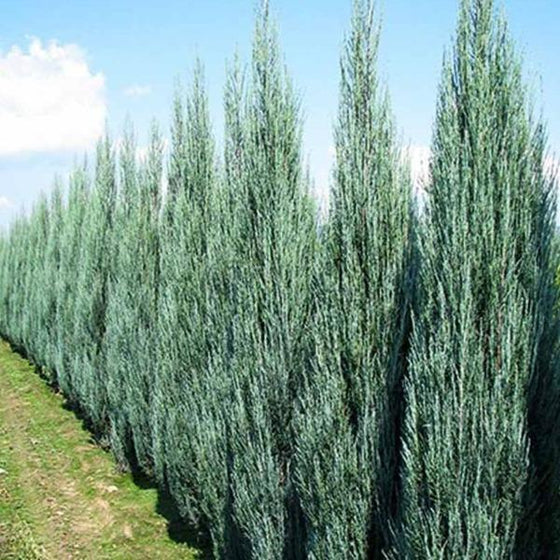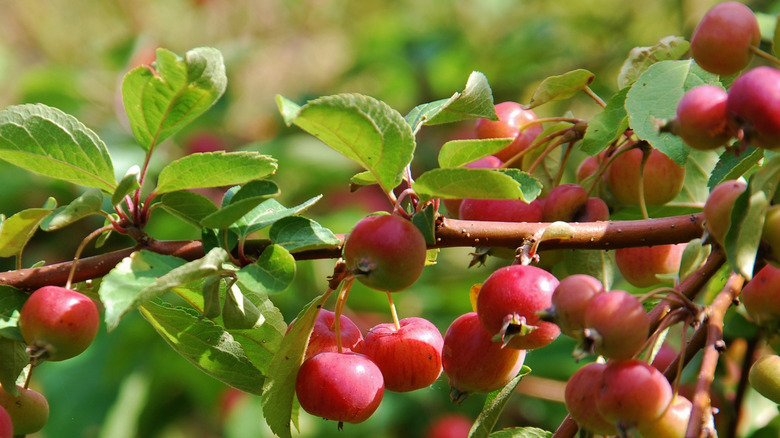Many different types of trees can thrive in rocky soil. Some of the best trees for rocky soil include the American beech, the black gum, the Eastern hemlock, and the sugar maple. Each of these trees has unique characteristics that make them well-suited for growing in rocky soil.
When it comes to landscaping in areas with rocky soil, selecting the right trees can make a significant difference. These trees should be able to withstand the challenges of poor soil quality while still thriving and adding beauty to the landscape. In this article, we will explore the factors to consider when choosing trees for rocky soil.
Factors to consider when selecting trees for rocky soil
- Root System:Look for trees that have strong and deep root systems, as they can penetrate through the rocky soil and access nutrients and water.
- Drought Tolerance:Trees that can handle dry conditions are desirable, as rocky soil tends to drain water quickly. Look for species that are known for their drought tolerance.
- Adaptability:Choose trees that are native or adapted to your specific region. They are more likely to thrive in the local climate and soil conditions.
- Soil Amendments:Consider incorporating organic matter or mulch into the planting hole to improve soil fertility and moisture retention.
- Size and Growth Rate:Take into account the mature size and growth rate of the trees, ensuring they have enough space to reach their full potential without being cramped by surrounding rocks.
- Resistance to Disease and Pests:Select tree species that are resistant to common diseases and pests in your area, as rocky soil can create stress and make trees more susceptible.
- Landscaping Goals:Consider the purpose of planting the trees. Are you looking for shade, privacy, ornamental value, or all of the above? Choose trees that align with your overall landscaping goals.

By considering these factors, you can successfully select trees that can thrive in rocky soil conditions and enhance the beauty of your landscape.
Pine Trees
Types of pine trees that thrive in rocky soil
When it comes to rocky soil, pine trees are a great option. They are known for their adaptability and ability to grow in various soil conditions. Here are some types of pine trees that thrive in rocky soil:
- Ponderosa Pine:Ponderosa pine (Pinus ponderosa) is a hardy tree that can tolerate rocky soil. It has long needles and large pine cones, and it is often found in mountainous regions.
- Scotch Pine:Scotch pine (Pinus sylvestris) is another pine tree that can thrive in rocky soil. It has short blue-green needles and is known for its resilience and ability to tolerate harsh conditions.
- Austrian Pine:Austrian pine (Pinus nigra) is a tough and adaptable tree that can grow in rocky soil. It has dark green needles and is commonly used for windbreaks and erosion control.
Benefits and drawbacks of planting pine trees in rocky soil
There are several benefits of planting pine trees in rocky soil. Some of the advantages include:
- Stability:Pine trees have a strong root system that can anchor them in rocky soil, providing stability and preventing erosion.
- Drought tolerance:Pine trees are generally drought-tolerant, making them well-suited for rocky soil, which tends to be less fertile and retain less water.
- Low maintenance:Once established, pine trees are relatively low maintenance, requiring less fertilizer and water compared to other tree species.
However, there are also some drawbacks to consider when planting pine trees in rocky soil:
- Nutrient limitations:Rocky soil may lack essential nutrients needed for optimal tree growth. Regular fertilization may be necessary to supplement the soil.
- Shallow root system:Pine trees typically have shallow root systems, which can make them more susceptible to wind damage in rocky soil.
Despite these challenges, with proper care and attention, pine trees can thrive in rocky soil and provide a beautiful and resilient addition to any landscape.

Oak Trees
If you are dealing with rocky soil conditions and looking for trees that can thrive in such environments, oak trees are an excellent choice. Here are some suitable oak tree species for rocky soil conditions:
Suitable oak tree species for rocky soil conditions
- Pin Oak:Known for its deep-rooting system, Pin Oak adapts well to rocky soil and can tolerate occasional flooding.
- White Oak:White Oak is known for its durability and ability to adapt to various soil types, including rocky soil.
- Bur Oak:Bur Oak is a hardy tree that can tolerate rocky soil conditions and is resistant to drought.
Tips for planting and maintaining oak trees in rocky soil
When planting oak trees in rocky soil, consider the following tips:
- Site Preparation:Clear the planting area of rocks, debris, and competing vegetation to give the oak tree roots space to grow.
- Amend Soil:Add organic matter, such as compost, to improve soil fertility and drainage.
- Proper Watering:Water deeply and infrequently to encourage deep root growth and help the tree establish in rocky soil.
- Mulching:Apply a layer of mulch around the base of the tree to help retain moisture, suppress weeds, and regulate soil temperature.
By selecting suitable oak tree species and following proper planting and maintenance practices, you can successfully grow oak trees in rocky soil conditions.

Juniper Trees
Advantages of growing juniper trees in rocky soil
Juniper trees are a great choice for rocky soil due to their adaptability and resilience. Here are some advantages of growing juniper trees in rocky soil:
- Drought Tolerance:Juniper trees have excellent drought tolerance, making them well-suited for rocky soil, which typically drains quickly.
- Soil Erosion Control:The extensive root system of juniper trees helps stabilize the soil, preventing erosion on rocky slopes and hillsides.
- Low Maintenance:Juniper trees are known for their low maintenance requirements, making them ideal for rocky soil areas where soil amendments or extra care may be challenging.
Recommended juniper tree varieties for rocky soil
When choosing juniper tree varieties for rocky soil, consider the following options:
- Juniperus scopulorum (Rocky Mountain Juniper):This native North American juniper thrives in rocky soil and is highly resistant to diseases and pests.
- Juniperus horizontalis (Creeping Juniper):This low-growing juniper spreads horizontally, making it perfect for rocky slopes and cascading over rocky terrain.
- Juniperus virginiana (Eastern Red Cedar):Able to adapt to various soil types, including rocky soil, this juniper variety is known for its tolerant nature and attractive foliage.
By choosing juniper trees and specific varieties that are well-suited for rocky soil, you can add beauty and greenery to challenging areas while requiring minimal maintenance and care.

Crabapple Trees
Crabapple tree varieties that adapt well to rocky soil
Crabapple trees are a great option for rocky soil due to their ability to tolerate poor soil conditions. Some varieties that adapt well to rocky soil include:
- Prairifire:This variety has vibrant purple-red foliage and deep pink blossoms.
- Indian Magic:Known for its dense and spreading growth habit, this variety features dark pink flowers and purple foliage.
- Donald Wyman:A reliable and attractive variety with white flowers and dark red fruits.
- Spring Snow:This variety is unique as it doesn’t produce any fruits, making it a good option for those who want a clean landscape.
- Sugar Tyme:With its abundant white flowers and persistent red fruits, this variety adds interest throughout the year.
Tips for planting and caring for crabapple trees in rocky soil
To ensure the successful establishment and growth of crabapple trees in rocky soil, consider the following tips:
- Site selection:Choose a location that receives full sun and has well-draining soil, as this will benefit the tree’s root development.
- Soil preparation:Amend the rocky soil with organic matter, such as compost, to improve its fertility and drainage.
- Planting technique:Dig a hole that is wide and shallow, spreading the roots out evenly. Backfill with soil mixed with compost.
- Watering:Provide regular watering, especially during the tree’s first year, to help it establish a strong root system.
- Mulching:Apply a layer of mulch around the base of the tree to retain moisture, regulate soil temperature, and suppress weed growth.
- Pruning:Prune crabapple trees in late winter or early spring to maintain their shape and remove any diseased or damaged branches.
- Pest and disease control:Monitor the tree for pests, such as aphids or apple scab, and take appropriate measures to prevent or manage infestations.
By selecting suitable crabapple varieties and implementing proper planting and care techniques, you can successfully grow these trees in rocky soil, adding beauty and interest to your landscape.

Serviceberry Trees
Benefits and Suitability of Serviceberry Trees for Rocky Soil
Serviceberry trees (Amelanchier spp.) are an excellent choice for planting in rocky soil due to their adaptability and resilience. Here are some key benefits and reasons why serviceberry trees are suitable for rocky soil:
- Tolerant of Challenging Conditions:g>Serviceberry trees can thrive in rocky soil, which is often poor in nutrients and may have limited water retention. They have a shallow and wide-ranging root system that can adapt to rocky terrain, making them ideal for such conditions.
- Beautiful Spring Bloom:g>Serviceberry trees are known for their stunning display of white or pink blossoms in early spring, adding aesthetic value to your landscape.
- Edible Berries:Many serviceberry tree varieties produce edible berries that are rich in antioxidants and have a taste similar to blueberries. These berries attract wildlife and can be harvested for culinary use.
Tips for Successful Planting and Maintenance of Serviceberry Trees
To ensure the successful growth and health of serviceberry trees planted in rocky soil, consider the following tips:
- Site Selection:Choose a location that receives adequate sunlight and has well-drained rocky soil. Avoid areas prone to excessive moisture, as this can lead to root rot.
- Amend the Soil:g>Prior to planting, add organic matter, such as compost, to improve the soil’s fertility and moisture retention capabilities.
- Proper Watering:g>Serviceberry trees require regular watering, especially during dry periods. Ensure the soil is evenly moist but not waterlogged.
- Prune Routinely:Pruning serviceberry trees improves air circulation and stimulates growth. Remove dead, damaged, or crossing branches during the dormant season.
- Pest and Disease Management:g>Serviceberry trees are generally resistant to pests and diseases. However, regular monitoring and appropriate preventive measures should be taken to maintain tree health.
By selecting serviceberry trees for your rocky soil landscape and following these planting and maintenance tips, you can enjoy their beauty and benefits for many years to come.

Birch Trees
Birch tree species that tolerate rockysoil conditions>Birch trees are an excellent choice for rocky soil conditions due to their resilience and adaptability. Here are 12 birch tree species that thrive in rocky soil:******
- Betula alleghaniensis (Yellow Birch)i>
- Betula papyrifera (Paper Birch)i>
- Betula nigra (River Birch)i>
- Betula pendula (Silver Birch)i>
- Betula jacquemontii (Himalayan Birch)i>
- Betula lenta (Sweet Birch)i>
- Betula utilis (Himalayan White Birch)i>
- Betula populifolia (Gray Birch)i>
- Betula occidentalis (Water Birch)i>
- Betula platyphylla (Siberian Birch)i>
- Betula ermanii (Erman’s Birch)i>
- Betula mandshurica (Manchurian Birch)
These birch tree species have the ability to thrive in rocky soil conditions while adding beauty and elegance to the landscape. Their adaptability and sturdy nature make them a practical choice for rocky terrain.

Source: shiftingroots.com
Dogwood Trees
Dogwood tree varieties that thrive in rocky soil
When it comes to planting trees in rocky soil, dogwood trees are an excellent choice. These beautiful and resilient trees can adapt well to challenging soil conditions. Here are some dogwood tree varieties that thrive in rocky soil:
- **Pacific Dogwood (Cornus nuttallii):**This native North American species is known for its showy white flowers and attractive red berries. It can tolerate rocky soil and is a popular choice for landscaping.
These dogwood tree varieties offer a range of options for adding beauty and resilience to landscapes with rocky soil conditions. Whether you are looking for showy flowers, colorful berries, or unique branching structures, dogwood trees are a great choice.

Source: gardenerspath.com
Maple Trees>Maple tree options for rocky soil landscapes
When it comes to planting trees in rocky soil, maple trees are an excellent choice due to their adaptability and hardiness. Here are some maple tree options that thrive in rocky soil landscapes:
- Sugar Maple (Acer saccharum) – Known for its beautiful fall foliage and sap used for maple syrup production.
- Norway Maple (Acer platanoides) – Tolerates a wide range of soil conditions, including rocky soil.
- Red Maple (Acer rubrum) – Prefers moist soil but can adapt to rocky soil if well-drained.
- Amur Maple (Acer ginnala) – A small tree that thrives in various soil types, including rocky soil.
Tips for ensuring healthy growth of maple trees in rocky soil
Although maple trees can tolerate rocky soil, there are some steps you can take to ensure their healthy growth:
- Prepare the planting hole: Dig a wide and shallow hole to break up the rocky soil and provide enough space for the roots to spread.
- Amend the soil: Incorporate organic matter, such as compost, into the planting hole to improve soil fertility and drainage.
- Mulch around the tree: Apply a layer of organic mulch around the base of the tree to retain moisture and suppress weeds.
- Water regularly: Irrigate the tree regularly, especially during dry periods, to ensure proper hydration.
- Monitor for pests and diseases: Regularly inspect the tree for any signs of pest infestation or diseases and take appropriate action if necessary.
By selecting suitable maple tree varieties and implementing proper planting and care techniques, you can enjoy the beauty and benefits of maple trees even in rocky soil landscapes.
:max_bytes(150000):strip_icc()/PrunusglandulosaAlbaPlena-GettyImages-1165504294-7cbd1b03b5a34c9e8932f84a3046601a.jpg)
Source: www.thespruce.com
Pink Flowering Almond Trees
Advantages and Considerations When Planting Pink Flowering Almond Trees in Rocky Soil
Planting pink flowering almond trees in rocky soil can offer several advantages. These trees are hardy and can thrive in challenging soil conditions. Here are some key advantages and considerations:
- **Tolerance to Rocky Soil:**Pink flowering almond trees have a high tolerance for rocky soil. Their root systems can penetrate and adapt to the uneven terrain, allowing them to establish themselves and grow.
- **Stunning Pink Blooms:**One of the main attractions of pink flowering almond trees is their beautiful pink blooms. These trees produce an abundance of delicate pink flowers, creating a visually striking display.
- **Low maintenance:**Once established, pink flowering almond trees require minimal maintenance. They are relatively drought-tolerant and can withstand harsh soil conditions, reducing the need for frequent watering or fertilization.
However, there are some considerations to keep in mind when planting pink flowering almond trees in rocky soil:
- **Drainage:**Ensure that the rocky soil has adequate drainage to prevent waterlogging. Standing water can lead to root rot and other issues that can harm the tree’s health.
- **Soil Amendments:**Consider adding organic matter or compost to improve the soil’s fertility and provide essential nutrients for the tree’s growth.
Care Tips for Pink Flowering Almond Trees in HarshSoil Conditions>
To ensure the successful growth of pink flowering almond trees in harsh soil conditions, follow these care tips:
- **Planting:**Dig a wide and shallow hole when planting the tree to encourage the roots to spread in rocky soil. This will help the tree establish a strong foundation.
- **Watering:**Initially, provide regular watering to help the tree establish its roots. Once established, water deeply and infrequently to encourage deep root growth and drought tolerance.
- **Mulching:**Apply a layer of organic mulch around the base of the tree to conserve soil moisture, suppress weed growth, and improve soil quality over time.
- **Pruning:**Prune pink flowering almond trees during the dormant season to remove dead or damaged branches and maintain a desirable shape.
With proper care and consideration, pink flowering almond trees can thrive in rocky soil, providing a stunning display of pink blooms and adding beauty to your landscape.
Elderberry Trees
Suitable Elderberry Tree Species for RockySoil Environments>
If you are looking to beautify your rocky soil environment with trees, elderberry trees can be a great choice. Elderberry trees are known for their adaptability and ability to thrive in various soil conditions, including rocky soil. Here are some suitable elderberry tree species that can thrive in rocky soil environments:
- European Elder (Sambucus nigra): This species of elderberry tree is native to Europe and has adapted well to different soil types, including rocky soil. It produces clusters of small, white flowers followed by dark purple berries.
- American Elder (Sambucus canadensis): Native to North America, the American elderberry tree is another excellent choice for rocky soil. It features beautiful white flower clusters and produces small, black berries that are often used in culinary preparations.
- Black Lace Elderberry (Sambucus nigra ‘Black Lace’): This elderberry cultivar is known for its dark purple foliage and delicate pink flowers. It can tolerate rocky soil conditions and adds a unique visual appeal to any landscape.
- Adams Elderberry (Sambucus nigra ‘Adams’): This elderberry cultivar is prized for its abundance of large, sweet berries and its ability to withstand harsh conditions. It can thrive in rocky soil with proper care and maintenance.
When planting elderberry trees in rocky soil environments, it is essential to provide adequate drainage and amend the soil with organic matter to improve its fertility. With the right care and attention, elderberry trees can thrive in rocky soil and add beauty to your landscape.

Source: video-meta.humix.com
XII. Conclusion
Key takeaways and recommendations for selecting trees for rocky soil. When dealing with rocky soil conditions, it is important to choose trees that are resilient and adaptable.
Here are some key takeaways and recommendations:
- **Research tree species:**Look for tree species that are known to tolerate rocky soil conditions. Some examples include pine trees, oak trees, junipers, and certain varieties of fruit trees.
- **Consider root system:**Trees with deep and strong root systems are better suited for rocky soil. These root systems can anchor the tree and access water and nutrients from deeper layers of soil.
- **Opt for native trees:**Native trees are more likely to thrive in local soil conditions, including rocky soil. They have adapted to the specific climate and soil types over time.
- **Provide proper care:**Even trees that are well-suited for rocky soil may require additional care in the early stages of growth. Ensure proper watering, mulching, and pruning to promote healthy development.
Final thoughts on creating a thriving garden in rocky soil areas
While rocky soil can present challenges, it is possible to create a thriving garden with proper planning and selection of suitable plants. In addition to choosing trees that are well-adapted to rocky soil, consider incorporating organic matter, such as compost, to improve soil fertility. Regular soil testing and fertilization can also help provide necessary nutrients for plant growth. With patience and consistent care, you can create a beautiful garden in rocky soil areas.
Related Articles
Insect Invasion: Threat to Utah’s Fir Forests
 Dr Ahsanur Rahman, PHD
Dr Ahsanur Rahman, PHD
UK Forests Collapse Imminent: Act Now Against Climate!
 Dr Ahsanur Rahman, PHD
Dr Ahsanur Rahman, PHD
Lightning Strikes Threat: Boreal Fires Jeopardize Carbon
 Dr Ahsanur Rahman, PHD
Dr Ahsanur Rahman, PHD





